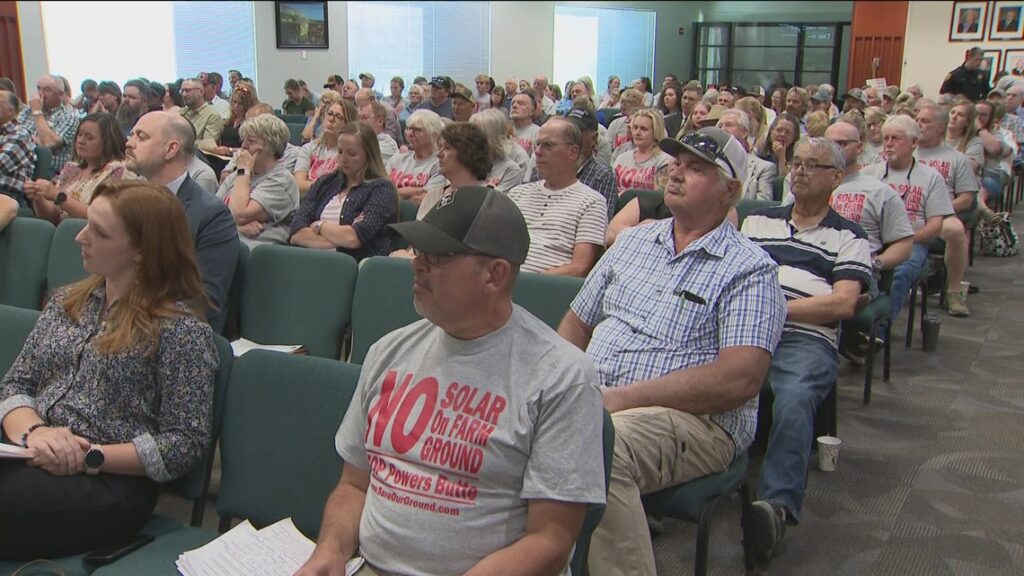ADA COUNTY, Idaho — The debate about a large solar farm proposed for Ada and Canyon County continued this week.
In May, over a hundred community members expressed their concerns to Ada County Commissioners.
On Wednesday, another public comment session took place, where seats were filled once again as people argued their cases regarding the 2,400-acre solar project.
Concerns About Farmland and Economy
Idaho already has several solar sites around the Treasure Valley. However, some residents are concerned about the new solar site taking over farmland.
Opponents of the Power Butte Energy Center’s solar project argue that the site would negatively impact the local economy.
Eric Casper, a farmer near Melba, said, “Once they build this, there won’t be the jobs that came off of that ground. It will choke our community, growth, and schools.”
Casper, who rented 500 acres of farmland for dairy cow feed, expressed concerns about the future, saying, “Preserve the farm ground like the Ada County comprehensive plan supports.”
Voices from Neighboring States
Rob Frank, an Oregon Commissioner-Elect for Harney County, worried about the precedent this project might set. “The whole Treasure Valley is some of the most fertile farmland in the western U.S.,” said Frank. “Taking such land out of production is worrisome as it may set a precedent across county and state lines.”
Frank noted that solar projects in Oregon did not bring the economic boost that farms offer.
Support for Renewable Energy
Despite the concerns, proponents of the solar project believe it will bring a valuable renewable resource to the area.
Brad Husinkveld, Idaho Conservation League Energy Policy Associate, stated, “Routinely, utilities select solar and storage projects as the least cost, least risk, most reliable, and safest option.”
Supporters also noted that the project would save 200 million gallons of water per day, which would be put back into the aquifer.
Mixed Opinions on Land Use
Shane Beus, who sold land to the solar company, mentioned the difficulty in selling the land, stating, “Some of it is very good farm ground, some of it is very marginal.”
Brian Merrell, another public hearing attendee, added, “There are large outcrops of lava rock that can’t be farmed. Some of our farm ground is good, and some is very bad.”
“This property is owned privately,” Beus remarked, “It’s interesting that all of a sudden, it’s Idaho’s farm ground, or my neighbor wants to claim it as his farm ground.”
Next Steps
The decision has been delayed until July 30th, allowing commissioners to review the comments from the hearing before making a decision. This hearing was specifically for the portion of the project in Ada County, while Canyon County’s planning and zoning commission will also have to vote.
Original Story at www.ktvb.com
